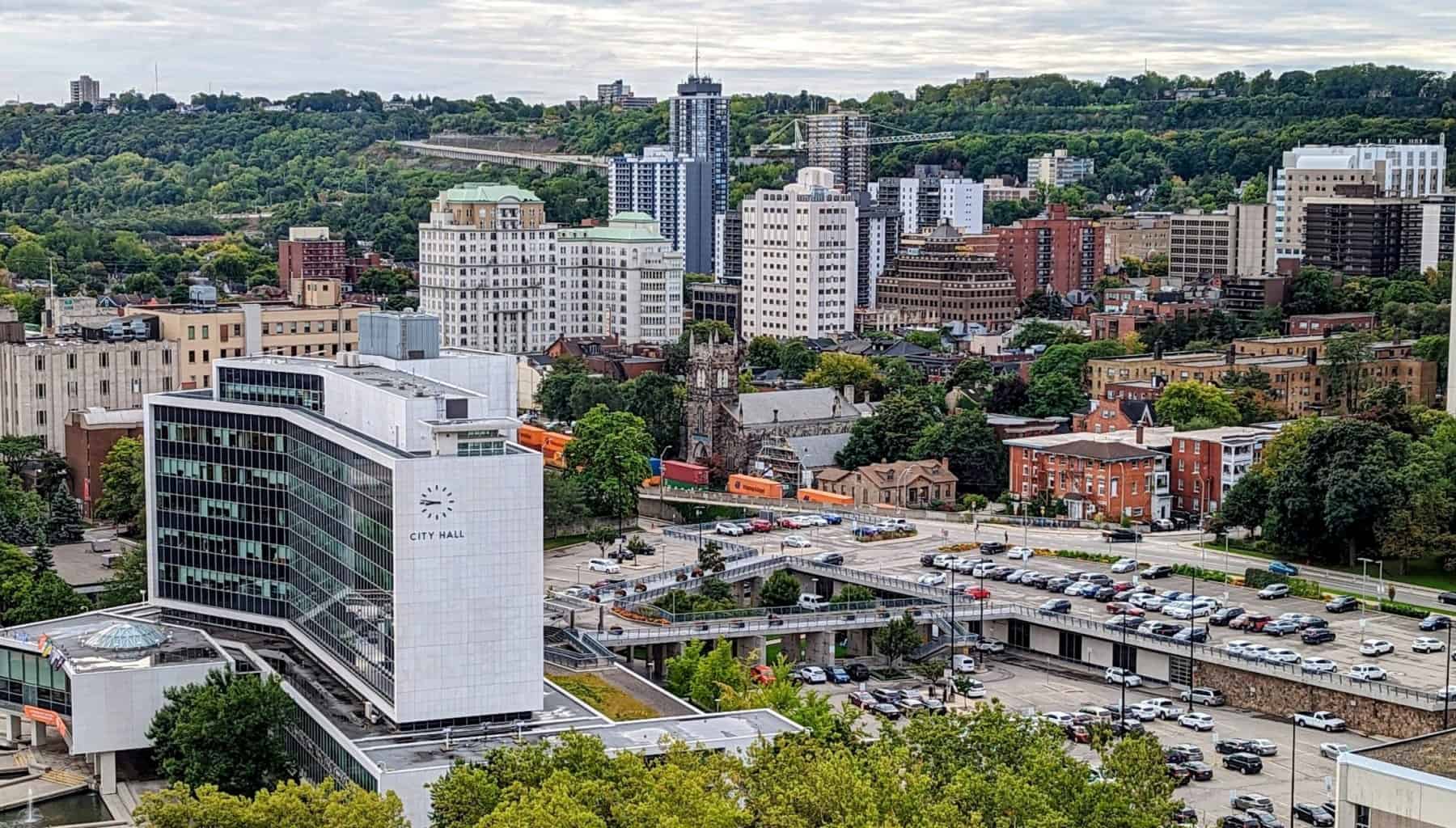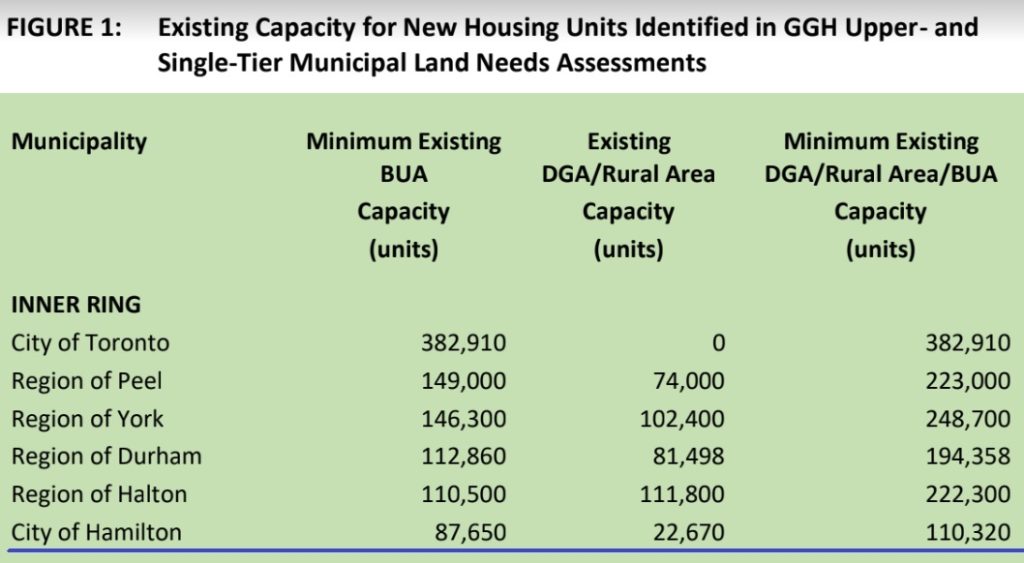Room to add 110,000 homes in Hamilton — without Greenbelt land swap: planner
Published February 27, 2023 at 3:42 pm

A new report indicates that Hamilton boasts “almost unlimited potential” to build more than double the new homes Ontario wants to see — and can do so without building on the farmland or Greenbelt lands that the Ford Government recently opened to development.
Local elected leadership in Hamilton said last week the city would, in the phrasing of Mayor Andrea Horwath, “seek to meet” a challenge to add 47,000 homes by 2031. Monday, a registered professional planner, Kevin Eby, published a report for The Alliance for a Liveable Ontario that draws on prior LNA (land needs assessments) in municipalities across Ontario’s Greater Golden Horseshoe (GGH) that are going back and forth with the Premier Doug Ford-led Ontario PC Party government about development legislation, including Bill 23.
With respect to Hamilton, Eby suggests there is room to add 110,320 housing units over the coming years. Around 79.4 per cent would come through infill density, or intensification, which amounts to 87,650 units. The balance of 22,650 units could fit within designated greenfield areas, rural land, and already built-up areas. It also notes that the infill would be congruent with the addition of the Hamilton LRT, which Ontario is committed to chipping in $1.7 billion to help build.
“Capacities for intensification in places like the City of Hamilton, which is planning for future implementation of almost 50 kilometres of higher order transit services, is almost limitless if there is a strong local economy, planning for a liveable higher density community is in place, and the right market conditions exist,” Eby writes in the report.

The chance to provide an aging population — namely Baby Boomers, who are the largest demographic in Canada and are between 58 and 77 years old — a choice to move on to other forms of housing is also part of Eby’s case for intensification. Climate adaptation is also mentioned. Hamilton, which is on the traditional territories of the Erie, Neutral, Huron-Wendat, Haudenosaunee, and Mississaugas, passed a climate adaptation strategy in 2022.
The report notes that upper and single-tier municipalities in the GGH, including Toronto and the Durham, Halton, Niagara, and Peel regions, have space to add around 2 million new dwellings. It also points out that investment in transit projects — which Ford and Transportation Minister Caroline Mulroney often tout while lumping in the controversial Highway 413 project with GO Transit and local transit — builds capacity to add intensification.
Waterloo forerunner to Hamilton?
Eby also points out that traditional forecasting methods for “project(ing) future housing choice” often overshoot the need for single-detached units (i.e., houses) while underrepresenting the potential for multi-unit construction. His report also notes investment in transit already fomented change in Waterloo Region.
The ION LRT, a 19-stop route that connects Kitchener and Waterloo, opened in 2019, but was in discussion since the early 2000s. Going back to 2009, a full decade before the ION became reality, less than half the projected single and semi-detached homes were actually built, despite land approvals. At the same time, building permits for apartments surpassed projections.
That is possible for Hamilton, Eby writes.
“The City of Hamilton will have almost unlimited potential for intensification over time as it reshapes itself into a denser liveable community anchored on higher order transit,” his report states.
The previous city council appeared to come around to that thinking in 2021 under then-mayor Fred Eisenberger. It signed a memorandum of understanding for the city to begin negotiating with Metrolinx, the provincial transit agency, to build the LRT after both senior levels of government promised to pick up the billions in construction costs. Following months of grassroots efforts from climate and social justice groups and counter-arguments from the building and development industry, it ultimately agreed to freeze the urban boundary and protect some 1,340 hectares of farmland.
None of the three councillors who voted for expansion remain on city council. One of them, former Ancaster representative Lloyd Ferguson, was instrumental in having Greenbelt farmland within Hamilton protected in 2017.
Days after Horwath and a new council were elected, the province introduced Bill 23 development legislation and the Greenbelt land swap. The Environmental Registry of Ontario also nixed Hamilton’s urban boundary freeze and ordered more “whitebelt” lands opened to residential development. An environmental group is now suing the province over that decision.
Municipal Affairs and Housing Minister Steve Clark is facing an integrity-commissioner investigation in regard to the Greenbelt changes, which remove about 3,000 hectares of land from the Greenbelt while adding 3,800. Multiple media reports have shown that developers who are Ontario PC Party donors bought Greenbelt land before the changes were announced. Ford is also facing pay-to-play allegations after reports that donors attended his family events and made contributions.
The premier said at a private event in 2018 that his government would open up the Greenbelt. He walked that back after the comments leaked into the media, and maintained his stance until last September.
Ontario ‘completely unrealistic’
The executive summary Eby prepared to lead off the report seems unsparing about the approach the province is taking to the housing crisis.
“It is completely unrealistic to assume the affordable housing crisis we face today will be solved by the private sector,” Eby writes. “That is not the business they are in.
“The private sector will play a supporting role in this process, but simply providing them with more urban designated land in the vain hope that somehow this will result in more and cheaper homes being built faster is not a realistic solution.”
There have been protests in Hamilton against the three-pronged changes with Bill 23, the Greenbelt, and the urban boundary expansion. Some city councillors, MPs, and MPPs have also participated.
The 19-page report, entitled, “which is entitled “Review of Existing Housing Unit Capacity Identified in Municipal Land Needs Assessments Prepared for Upper- and Single-Tier Municipalities in the Greater Golden Horseshoe,” is available at YoursToProtect.ca.
insauga's Editorial Standards and Policies advertising





